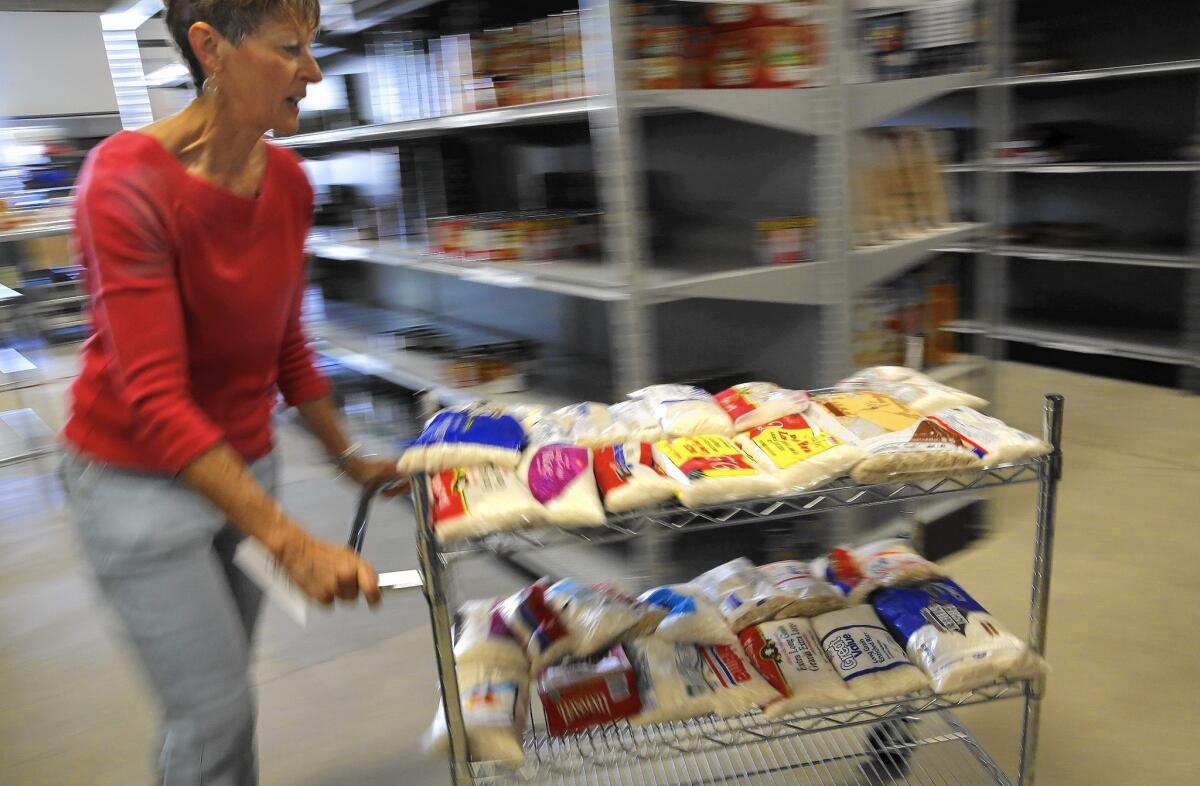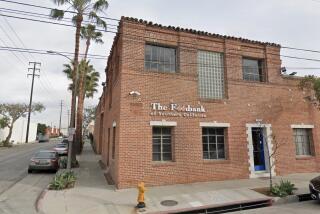Column: Orange County program makes donating leftover food easier

Eric Handler, the top public-health official in Orange County, recalls the day a few years ago he was chatting with Mark Lowry, head of the Orange County Food Bank.
Handler wondered whether it would be possible to end hunger in the county if, somehow, all the food that gets thrown away each year could be channeled to people in need.
Lowry thought about it a moment and offered a simple response: Yes, that would end hunger for thousands of local residents.
“Everything that’s happened since then grew out of that one conversation,” Handler told me.
Last week, I wrote about Starbucks committing to donate 100% of leftover food to charity. I concluded that more businesses would follow suit if they understood it wasn’t as hard — or legally perilous — as they might think.
That prompted a call from Handler. He said I needed to check out a program called Waste Not OC.
He was right. Orange County has come up with a public-private partnership for reducing food waste that can serve as a model for other counties, the state and even the nation.
Handler said he has already received interest from Los Angeles, San Diego, San Bernardino and other California counties about establishing their own Waste Not programs.
Waste Not OC also was recently honored as a “model practices program” by the National Assn. of County and City Health Officials. Orange County’s approach, the group said, “demonstrates exemplary and replicable qualities in response to a local public health need.”
So what are these guys doing? It’s pretty simple — and smart.
They’re actively teaching restaurants and other food businesses that it’s possible to donate leftover food. They’re also putting procedures in place to better identify people and families in need. Finally, they’re making it easier for leftovers to get to those who can use them.
“All it takes,” Handler said, “is dedicated, passionate people who want to see it happen.”
The hardest part was getting restaurants and other food businesses on board.
“Most of us live by the credo ‘When in doubt, throw it out,’” said Mike Learakos, owner of Katella Grill in Orange. “There’s a big fear of liability if you donate leftover food.”
He told me that he and most other restaurant owners he knows had no idea that a federal law is on the books that safeguards food donors from being sued. It’s called the Emerson Good Samaritan Food Donation Act.
But what got Learakos involved with Waste Not OC was the participation of Orange County’s health department. He said it makes a huge difference knowing that health officials have set standards for, and signed off on, donations of prepared food.
One of the genius aspects of Waste Not OC is the way it enlists county restaurant inspectors in the effort to reduce food waste. Since they’re already interacting with restaurant owners, they’re in the best position to educate potential donors.
Handler said inspectors now routinely inform restaurants and other food businesses about Waste Not OC and provide information about the Good Samaritan Act. It’s a great way to spread the word from a trusted source.
The next step is to facilitate pickups and delivery of leftovers to food pantries, shelters and other locations.
Lowry, the director of the Orange County Food Bank, said many charities have their own pickup vehicles or work with nonprofits such as Food Finders and Second Harvest to collect contributions.
The trick with perishable foods is to avoid storage. During transit, cold food is kept cold, hot food is kept hot, and it’s taken straight to a local food pantry or shelter that can serve it to those who need it.
Charities that receive food donations aren’t protected by the Good Samaritan Act — they have to meet local health regulations when serving food to the needy.
“Having the health department involved in Waste Not OC really alleviates a lot of those concerns,” Lowry said.
Handler said food deliveries also are being handled by Yellow Cab, which is contributing its vehicles and drivers during idle hours.
“If there’s a late-night pickup, they’ll do it,” he said.
The final part of the equation is identifying those in need and helping them find food. Handler said questions about hunger are now being asked when people check into hospitals and family resource centers. This has provided a more accurate picture of the county’s food needs.
Meanwhile, Waste Not OC has tweaked Google Maps to show people where they can find their nearest food pantry. It’s a simple way of connecting the hungry with local places where food is available.
To date, Waste Not OC has recovered 236 tons of perfectly good food — nearly 392,000 meals — that otherwise would have gone into the trash since the program started in 2012.
“There’s no reason why the same sort of partnership couldn’t exist in any other community,” Lowry said.
No reason at all.
David Lazarus’ column runs Tuesdays and Fridays. He also can be seen daily on KTLA-TV Channel 5 and followed on Twitter @Davidlaz. Send your tips or feedback to [email protected].
More to Read
Inside the business of entertainment
The Wide Shot brings you news, analysis and insights on everything from streaming wars to production — and what it all means for the future.
You may occasionally receive promotional content from the Los Angeles Times.











